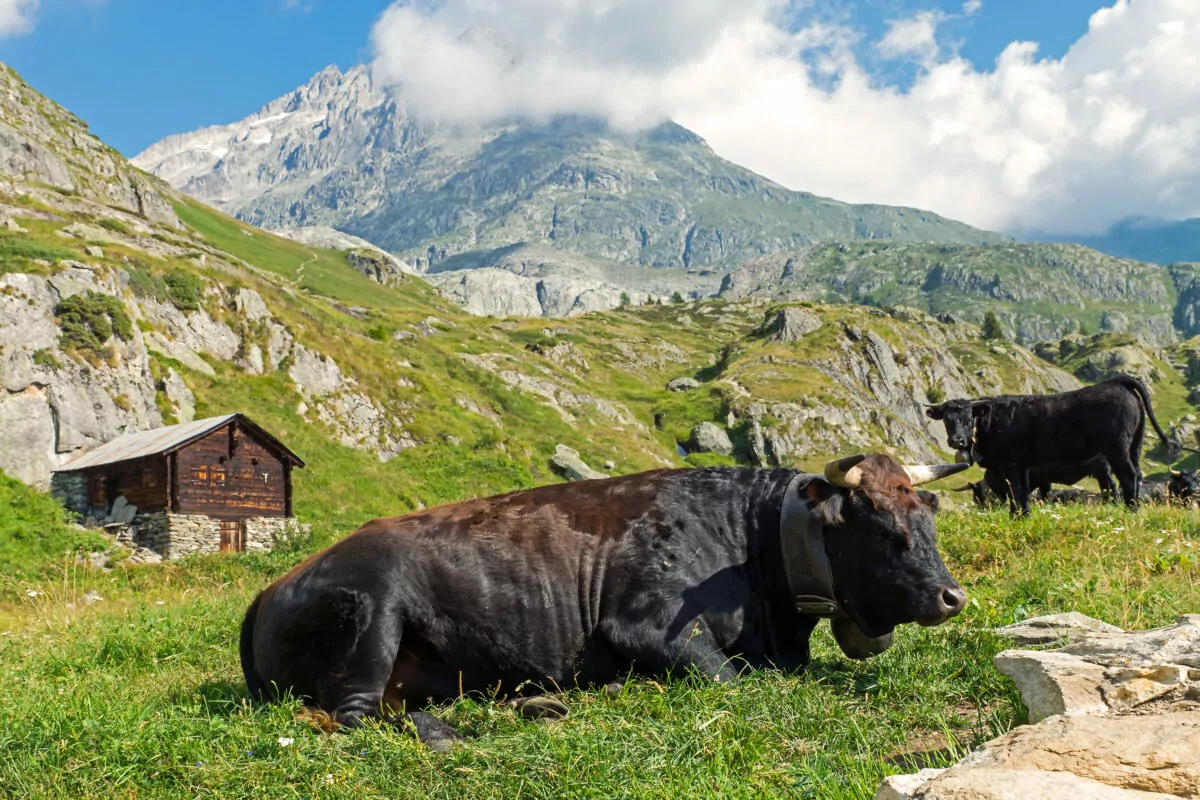Switzerland and Cows: A Flourishing Enduring Bond
From the allure of Swiss cheese and chocolate to the resonance of cowbells and the sizzle of burgers, the cow proudly stands as Switzerland’s enduring emblem, a legacy woven seamlessly into its ancient tapestry. Switzerland and cows are simply inseparable.
The University of Basel’s recent exploration delves into the captivating interplay between Swiss cows’ genetic evolution and the societal shifts in this Alpine haven. This insightful study, detailed in the journal Diversity, meticulously traces Swiss cows‘ morphological and genetic trajectory, examining their skeletal remnants from the Stone Age to the early Middle Ages.
The land of Switzerland and cows go a long way together. For approximately 7,500 years, domestic cattle have been integral to Switzerland’s economic tapestry, providing sustenance in the form of meat and milk and serving as indispensable laborers. The cow bones unearthed in this study emerge as time capsules, offering an invaluable window into the past.
As Basel’s archaeo-zoologist, Sabine Deschler-Erb, underscores, these remnants illuminate not just the historical reliance on farm animals but also provide nuanced insights into socio-cultural changes, revealing shifts in housing, dietary practices, population dynamics, and agricultural methodologies. The cow, it seems, grazes the Alpine meadows and the annals of Switzerland’s rich history.

Echoes of Roman influence resonate in Alpine pastures
In the first century BC, a noteworthy surge in genetic diversity among cattle caught the attention of researchers. This phenomenon coincided with the Roman settlement north of the Alps, as the Romans introduced their indigenous cows to the region. The ensuing crossbreeding between the local and Roman cattle varieties blended their native heritages and triggered a discernible increase in the size of the cattle. This growth in stature mirrored the expanding population’s demands for more extensive arable land and more robust workhorses, reflecting a fascinating interplay between human settlement patterns and the evolution of animal husbandry.
The study unveils a compelling narrative of how these distinctive characteristics evolved through selective breeding practices. An intriguing reversal occurred as the Romans gradually withdrew from the region during the third and fourth centuries AD. The cattle underwent a size reduction, and the once-diverse gene pool was simplified. This inverse trend mirrored the changing dynamics of the human societies that had thrived on Roman influence. The downsizing of the cattle likely correlated with the diminished need for expansive agricultural practices. It reflected a shift towards more localized and self-sufficient economies in the early Middle Ages.
The early Middle Ages witnessed a paradigm shift in agricultural practices and societal structures. Agriculture became more fragmented, and communities increasingly embraced self-sufficiency. This shift in farming dynamics rendered large cattle, which demanded substantial space and feed, a disadvantage for individual farms. The era marked a return to decentralized, smaller-scale agricultural practices, where efficiency and sustainability became paramount. The intricate dance between human societal needs and cattle’s physical characteristics highlights the interconnectedness of historical developments in agriculture and animal husbandry.
Switzerland and Cows Chronicles
In the symphony of Swiss history, Switzerland and cows emerge as an enduring thread, woven seamlessly from the allure of cheese to the echoes of Roman influence. The University of Basel’s exploration, chronicled in Diversity, uncovers the genetic evolution of Swiss cows, revealing a 7,500-year connection to the nation’s economic tapestry.
From the surge in size during Roman settlement to the practical downsizing in the early Middle Ages, cattle mirror societal shifts. Unearthed through meticulous study, these skeletal remnants serve as time capsules, offering glimpses into the nuanced interplay between human history and the silent hoofbeats that have grazed the Alpine meadows and scripted Switzerland’s rich narrative.
The relationship between Switzerland and cows extends beyond mere symbolism, becoming a tangible testament to the nation’s resilience and adaptability. The dynamic interdependence, woven into the fabric of Switzerland’s history, highlights the profound and reciprocal influence between a country and its cherished bovine companions.
Original article: keystone-sda.ch, theswisstimes.ch.




 Littauerboden 1 CH-6014, Luzern Switzerland
Littauerboden 1 CH-6014, Luzern Switzerland info@swissmade.direct
info@swissmade.direct

